Melanistic Eastern Garter Snake at Long Point in Ontario
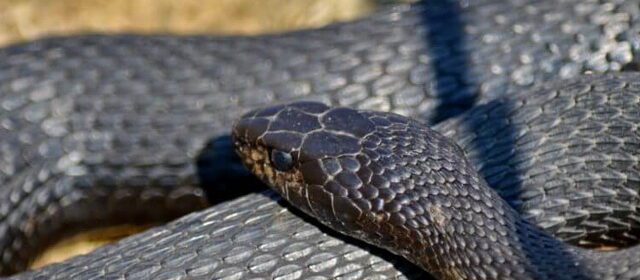
After several hours of bird watching at Long Point Bird Observatory in Ontario, Bob and I decided to check out another location, Crown Marsh, before heading off for dinner. A lengthy walk there on Long Point Trail 6 had us coming across this substantial Melanistic Eastern Garter Snake.
The Crown Marsh encompasses an area of 1,750 acres. It is a significant and globally important wetland found along Erie Boulevard. Bob and I set off from a small parking lot and followed the Crown Marsh Trail into the heart of the Marsh.
It was when we returned to our vehicle about an hour later that we took notice of this Melanistic Eastern Garter Snake basking in the late afternoon sunshine.
Someone had discarded a bale of straw there among the dogwood and willow thickets, and the snake found it a welcome place to curl up and rest.
Eastern Garter Snakes come in a wide range of colours ranging from green or brown with yellow stripes to even red and blue. This is an Eastern Garter Snake that we photographed near Whitby, Ontario, one early spring day.
A Melanistic Eastern Garter Snake is one with a recessive genetic trait that causes the development of the dark-coloured skin pigment melanin. This colour morph occurs so frequently among Eastern Garter Snakes that it is almost considered “naturally occurring”.
Melanistic Eastern Garter Snakes are usually a deep, dark black, especially if observed just after a snake has shed its skin. Because snakes must absorb heat from their environment to maintain their body temperature, we could see how a Melanistic Garter Snake would benefit from being black.
Perhaps that is why Melanistic Eastern Garter Snakes are more common in the northern reaches of their range. Their black bodies are able to soak up the sunlight more effectively, which helps them withstand colder temperatures.
When Bob and I first spotted this individual, we both thought it was a similarly-coloured Northern Water Snake. We had help from experienced herpetologists who set us straight.
As far as size of an Eastern Garter Snake, this Melanistic individual was close to the upper end of the size scale. These snakes usually reach a length of 2 1/2 feet, although the record was set by one snake that reached almost 5 feet long. I think the snake we saw was close to that length as well.
Eastern Garter Snakes are harmless creatures although their saliva is mildly venomous so that they can stun prey before swallowing it whole. These snakes are highly adaptable and so live in habitats all over North America.
Eastern Garter Snakes rely heavily on amphibians for their food supply so most often are found in areas adjacent to some source of water.
Eastern Garter Snakes hibernate in a hibernaculum between October and early April. That is a communal den with many other snakes where they help to keep each other warm. We were lucky to come across this Eastern Garter Snake that gave us such extraordinary views before it slithered off into the marsh.

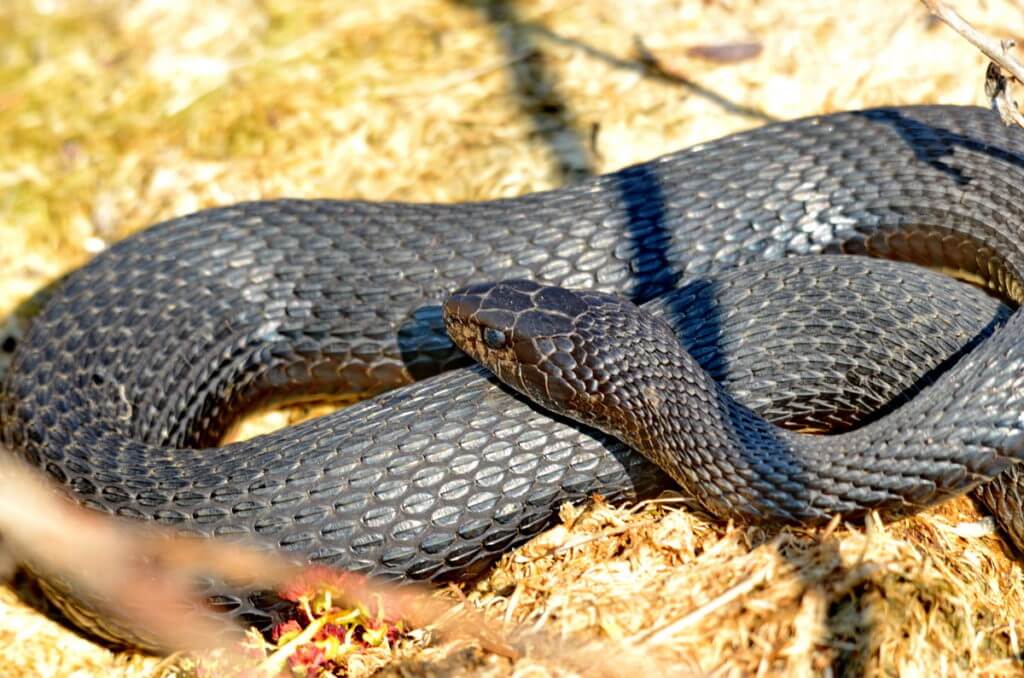

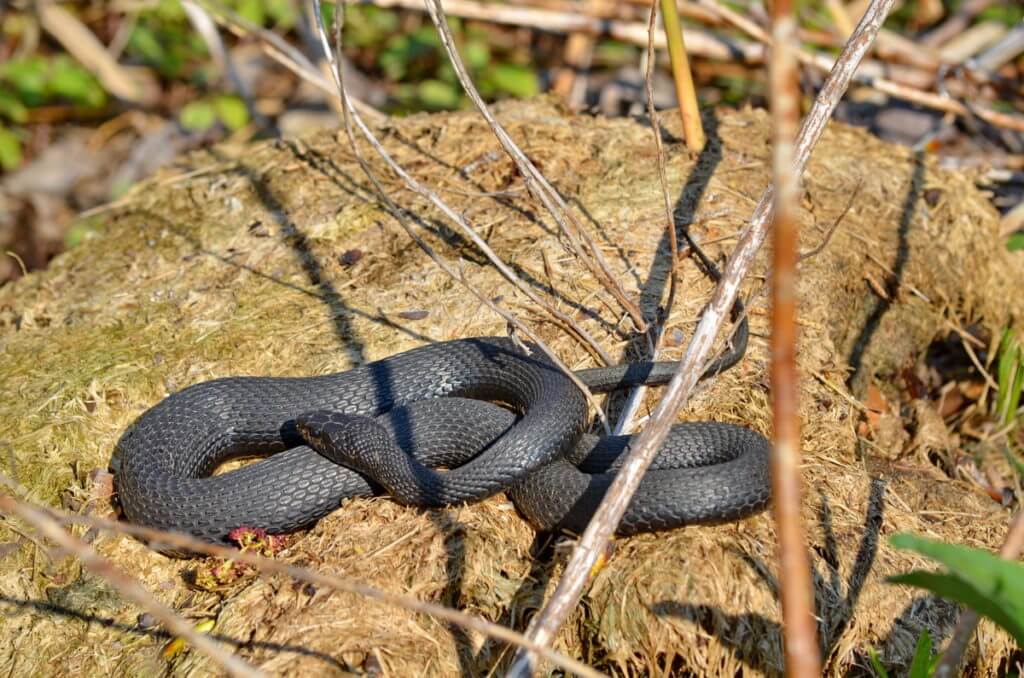
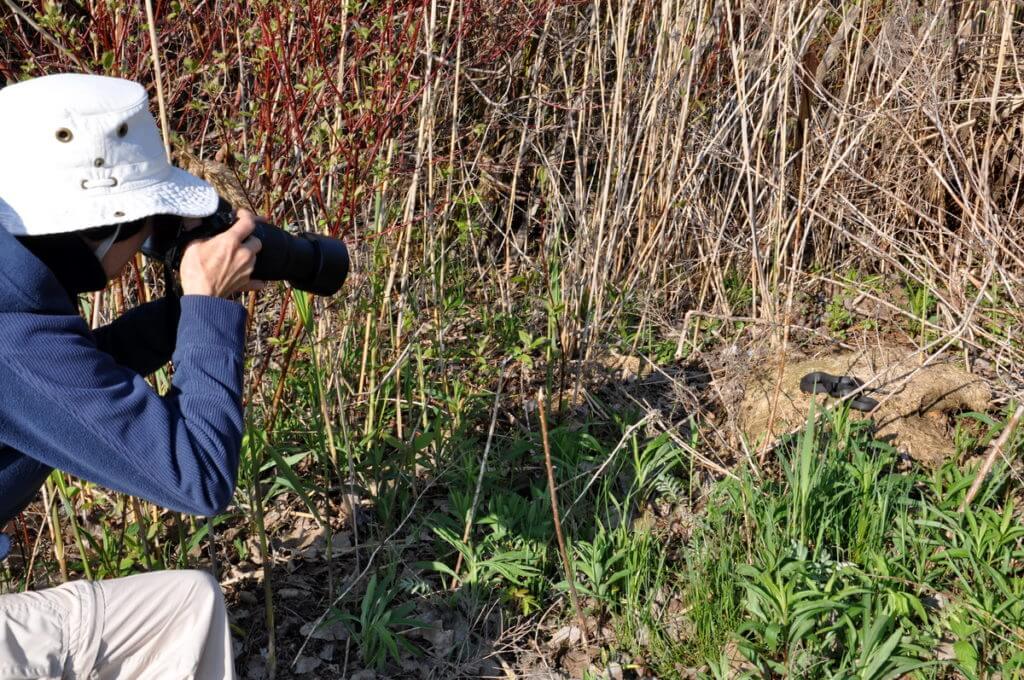


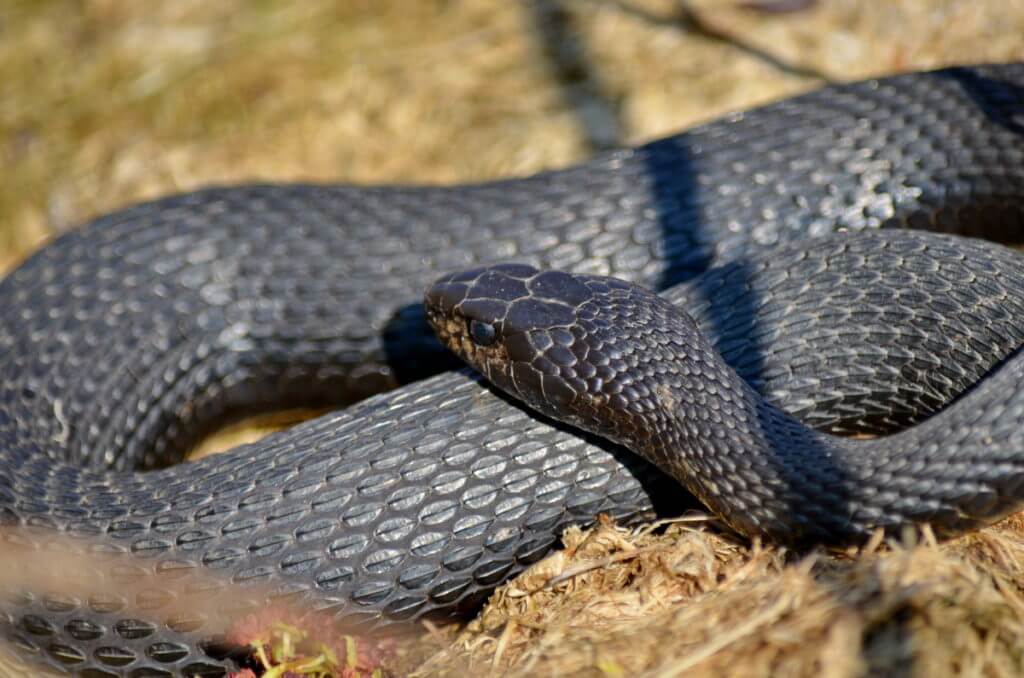
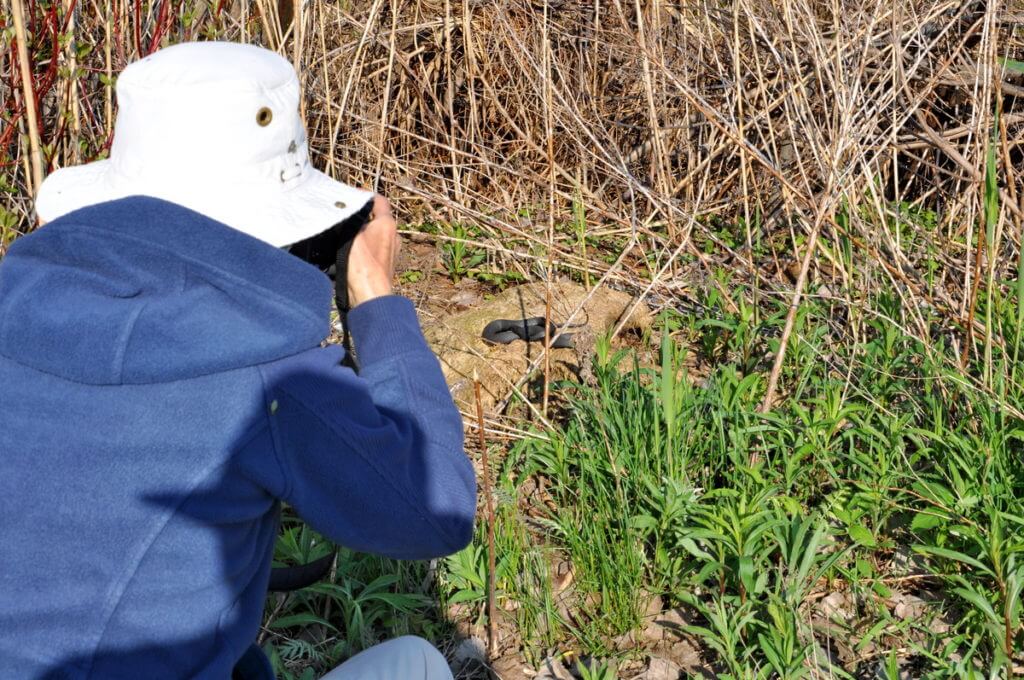
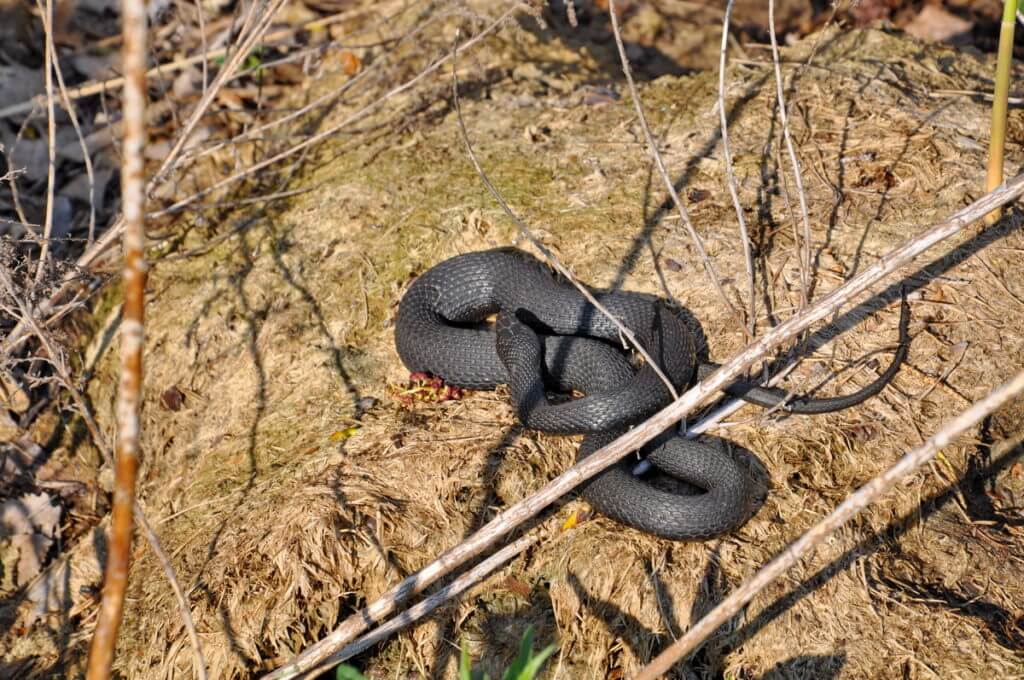

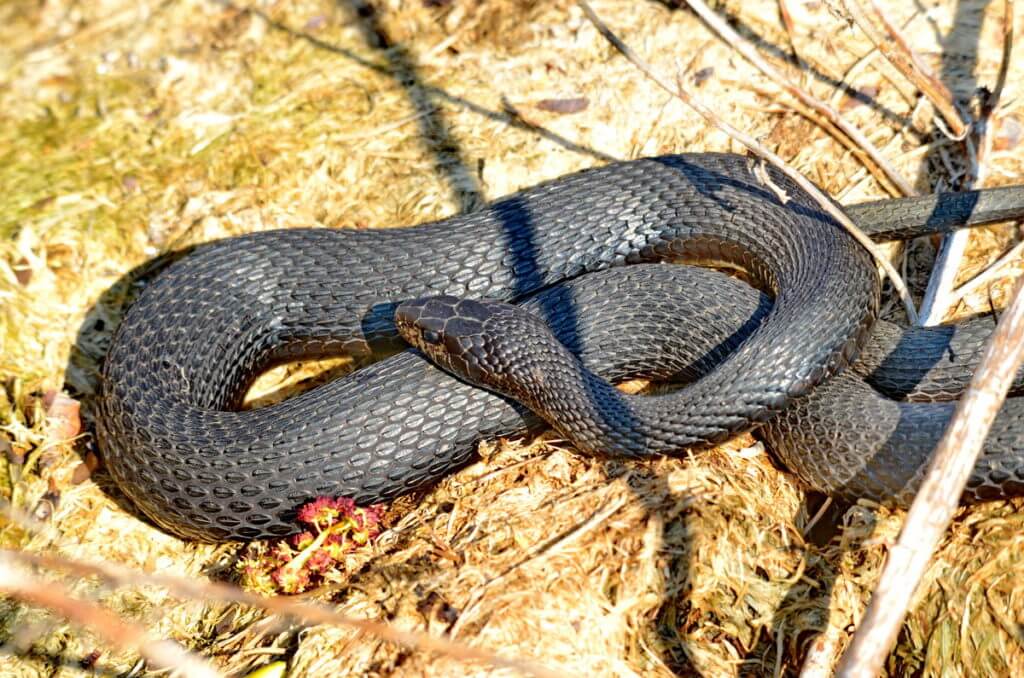

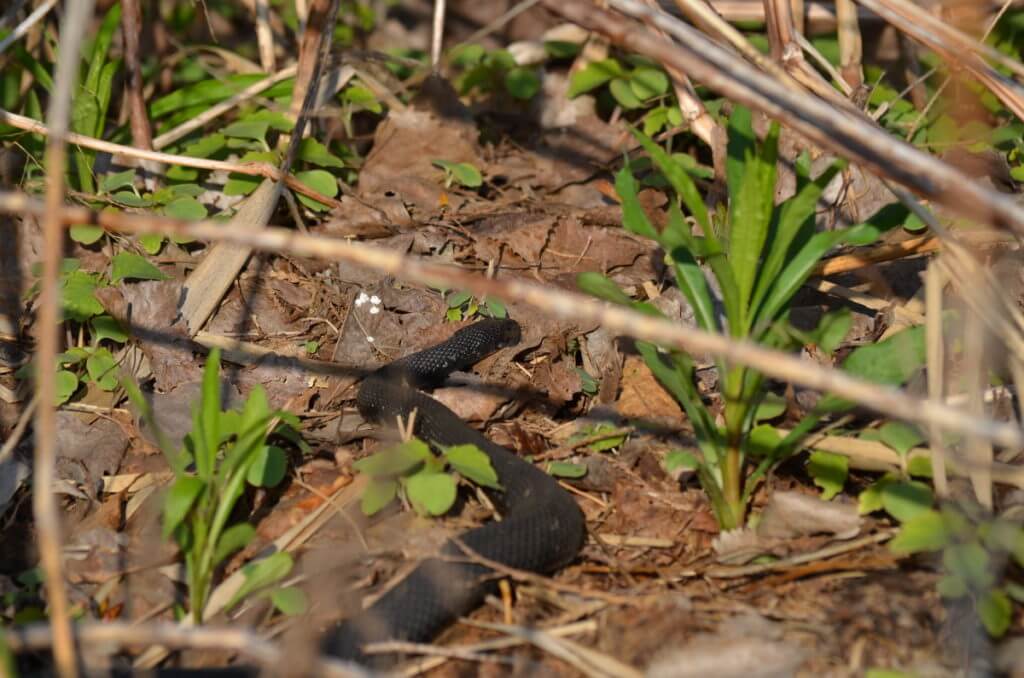
I remember endless melanistic garters at Long Point when I was a child. My parents were founding members of the long gone Ontario Herpetological Society in the 1950’s and 1960’s and we were friends of the Curator of the Buffalo Zoo, Clayton Freiheight. He organized an unofficial breed and release program for endangered reptiles. We often went to Long Point and had permission to go past the closed area onto the private end of the point that was a private hunting compound. We collected several Massassauga Rattlesnakes which were still in this area along with several Blue Racers, a very long snake and endless Melanistic Garters which Clayton felt were a sub species. Most individuals were kept at the zoo for breeding and some were shopped out to homes of interested amateurs for breeding and raising of the young for a while. Thousands of little snakes got released back into the wild and probably helped the populations hang on a while longer as habitat loss reduced their numbers. Nice to see there’s still some around.
Thank you for sharing your memories and experiences with us. Your feedback was fascinating. So glad that so many snakes were released to help with the population of these beautiful creatures.
I caught a melanistic hoghose snake near Kalamazoo in the 1950s. Melanistic snakes resemble blue/black racers that are not venomous but not to mess with. Rattlesnakes that hognose snakes often memmic are rare in SW Michigan and Ontario. So there may be selective pressure that favours melanistic harmless snakes. I have checked around. There is not a lot of scientific literature on melanistic small snakes. It would make good amateur project.
Hi Norm. Thank you for reading our blog and for taking the time to comment. You raise some interesting points that we had not thought of before. I will have to do more investigation and reading on the theory that you suggest. Thanks again.